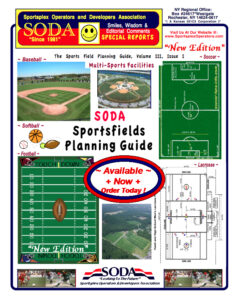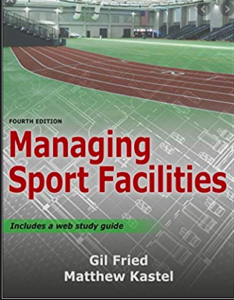All eyes were on Anna Leigh Waters, 15, and Ben Johns, 23, a mixed doubles team and perhaps the brightest stars in the rapidly expanding pickleball universe, phenoms changing the way the game is played and perceived. Competing in the Baird Wealth Management Open, one of the biggest events staged by the Professional Pickleball Association, Waters and Johns are torchbearers for a young sport with a future as promising as it is unpredictable.
Quaint and complex, the game has been likened to chess on concrete and is most commonly compared to tennis, badminton and table tennis. It also has exploded into a big business with no shortage of deep-pocketed investors and eager opportunists.
Pickleball isn’t a sport at a crossroads as much as it’s a five-lane highway with everyone trying to merge while careening against the guardrails at top speed. There are three professional leagues battling for players, customers, sponsors and superiority. Communities are racing to build courts to satisfy an ever-growing appetite, and investors are finding new ways to monetize the sport. Meanwhile, the tennis community is trying to save its courts and safeguard its future.
There’s no blueprint for this kind of growth. Pickleball, with its quirky name and humble roots, was invented in 1965 and has long been popular in retirement communities. But it went mainstream only in the past few years. Aided by a pandemic boom, there were 4.8 million players last year, according to the Sports & Fitness Industry Association, though many in the industry suspect the real number is much higher, based on equipment sales and online activity. There are now 10,000 facilities nationwide registered with USA Pickleball, with three new venues opening every day on average.
Tyson McGuffin doesn’t look like a prototypical pickleball player, but maybe there’s no longer such a thing. The sport is several years removed from any stereotypes or stigmas about being strictly a 55-and-older pastime, and it’s seeing growth across virtually all demographics.
McGuffin is a tatted, mulleted, mustachioed ball of energy on the court. Then there’s J “Gizmo” Hall, who sports dreadlocks past his shoulders and competes wearing brightly colored, mismatched clothes that often feature cheeseburger patterns. And if Parris Todd looks like a fashionista on the court, it’s because she’s a fashion designer off it.
The tour features former lawyers, accountants, college professors and many, many former tennis players. Its highest ranks also include teenagers Waters, Jorja Johnson (15) and her brother JW Johnson (19). Though the sport is buoyed by millions of casual players, there are a few dozen touring pros who earn a living off prize money, endorsement deals and pickleball clinics and coaching.
Professionally and recreationally, the game is showing no signs of slowing down. Its biggest events are staged in famous tennis venues such as Lindner Family Tennis Center in Ohio, Indian Wells Tennis Garden in California and Billie Jean King National Tennis Center in New York.
“If you would’ve told me two years ago we would have been able to take those courts and turn them into pickleball courts, I would have thought you were crazy,” said Ken Herrmann, chief executive and founder of the Association of Pickleball Professionals.
In Cincinnati, more than 850 players signed up for the four-day event, where 42 pickleball courts were spread across the tennis center — a pickle-palooza by any measure. Tennis Channel covered each day.
The buzz and energy is still new. According to the Sports & Fitness Industry Association, there were 3.4 million players in 2019, a figure that shot up 39 percent post-lockdown.
“You’ve got to remember that people couldn’t do anything, but they could go out in their driveway or in their cul-de-sac or the street or the park,” said Leigh Waters, one of the nation’s top doubles players who teams with her daughter Anna Leigh. “And they could do it with their family. It didn’t matter what age they were, what athletic ability they were.”
With a smaller court and a shorter net than tennis, the game can be more intimate and doesn’t necessarily require as much mobility. The plastic ball has holes like a Wiffle ball, giving it pop off the paddle and making the speed and pace manageable. Children play alongside grandparents. Men team up with women. Among pros and amateurs alike, the doubles game is more popular and highly regarded than singles.
“It’s all about equality,” says Anne Worcester, a strategic adviser for Major League Pickleball. “All ages can play — all genders, all geographies, indoors or outdoors. It’s fun, it’s social, it’s easy to pick up regardless of athletic ability. It’s affordable and inexpensive. Pickleball meets every consumer need.”
The major hotbeds are California and Florida, but nearly the entire country has felt the demand. Private businesses have been sprouting up everywhere, such as the Pickle Shack in Columbus, Ohio, which is open to players 24 hours a day; the Missouri Pickleball Club outside of St. Louis, which features 18 indoor courts spread across 51,000 square feet; and several places like Chicken N Pickle, a chain that aims to marry casual pickleball with casual dining.
Parks and recreation departments have been similarly scrambling to accommodate pickleball’s popularity.
According to the National Recreation and Park Association, nearly 80 percent of departments serving communities of at least 250,000 people have outdoor tennis courts; half now also feature pickleball courts. Change is harder on the public side, where local officials have to sort out limited resources, often re-purposing tennis courts or converting soccer fields. They also must weigh the needs of their tennis players, who don’t want to lose courts or contend with pickleball lines. (A single regulation tennis court can accommodate four pickleball courts.)
In Wichita, a pickleball pro is now on the city payroll to help oversee the sport and run clinics and tournaments, and local officials have allocated $3 million to build its “Pickleplex,” a 20-court public facility scheduled to open next year.
“I knew it was coming, but it’s hard to move fast enough,” said Troy Houtman, Wichita’s director of parks and recreation. “People are just so hungry for it.”
Herrmann saw the potential early. With a background in tennis as a player, coach and club operator, he launched the APP in 2019, growing it from three annual events in 2020 to 32 this year, featuring $2 million in prize money.
The PPA’s Pardoe was early in the space, too. After his family, which runs a real estate development company in Utah, began casually playing together, they dreamed up something similar to the AVP beach volleyball tour. The PPA launched in 2018 and this year is staging 20 events with $3 million in prize money.
And a hedge-fund manager named Steven Kuhn founded Major League Pickleball in 2021, introducing a rating system and offering a team format that set it apart from the two existing tours. Backed by investors including Drew Brees, James Blake and Gary Vaynerchuk, the league is hosting three events this year, featuring many of the players from the tours.
All three entities are vying to be the market leader. For now, they seem to coexist, but the PPA ruffled feathers when it signed exclusive contracts with some of the sport’s top players. The tour was purchased this year by Tom Dundon, the billionaire owner of the NHL’s Carolina Hurricanes, who quadrupled the staff and moved the operation from Salt Lake City to Dallas. It has already seen improved coverage on Tennis Channel and even a weekend slot on CBS for a recent tournament.
“The most amount of money we bring in from our different buckets, the number one would be sponsorship,” the PPA’s Pardoe said. “When I came into the sport, we did not have $1 in sponsorship money, not one sponsor behind us. When we came in, it was all family money. It’s pretty surreal.”
“I have the best job in the world, honestly, because it’s true: Everyone wants to be in pickleball,” said Josh Freedman, an agent to some of the game’s top players. “I think we’re very, very early and the appetite is not even close to being fulfilled yet.”
But it’s not clear whether the sport, with many more amateur players than tour followers, will support three top-level organizations. They all have different credentials: The APP is sanctioned by USA Pickleball, the national governing body; the PPA has Dundon and many of the top players locked up; and Major League Pickleball, which is aligned with APP, features a team format that aims to be more like the Davis Cup or World Team Tennis.
“Let’s learn from tennis’s successes and learn from tennis’s mistakes,” said Worcester, the MLP adviser who previously served as chief executive of the Women’s Tennis Association and spent decades in the tennis industry. “Pickleball already has too many acronyms, so I’d like to think that pickleball will get its act together and streamline.”
Worcester said that means consistent rules and a unified ranking system — and not stirring confusion for the pickleball players and viewers.
“There’s been space for everybody,” the PPA’s Pardoe said, “and I think the other organizations are doing a great job right now. I think it’s been nothing but helpful for everybody.”
As most tennis aficionados would be quick to note, pickleball is not tennis. But the sports are certainly related, and their fortunes can’t be easily untangled.
On the court, the scoring is different; the athleticism, mobility and endurance are much different. Even the seriousness, intensity and collegiality can feel different.
Pickleball can feature long rallies with players gathered closer to the net, exchanging short-distance dinks — until a switch is flipped and the players launch into a rapid-fire exchange of volleys. At the highest levels, it’s a game of both finesse and power. There are few aces — only underhand serves — and shot placement is at a premium.
“In tennis, if you physically don’t meet the high-level physical standards, it’s very hard to compete,” said 32-year-old Jessie Irvine, who was a high-ranked junior tennis player and is now one of the top pickleball players in the country. “This is a more neutralizing sport, more based on skill than actual physicality the way tennis is.”
Like Irvine, many pickleballers at all levels, old and young, come from tennis backgrounds, and pickleball is increasingly co-opting tennis resources, its courts and its players.
JTCC is a highly regarded training ground for young players — Frances Tiafoe among them — and next month it will host a PPA event at its College Park campus for the first time.
“For people in the tennis establishment to demean pickleball is missing the point,” he said. “We have plenty of room for a vibrant tennis industry and a vibrant pickleball industry. But to pretend it isn’t competition and demean it, that’s like people who drove horse and buggies demeaning the automobile. It’s not a fad, and it’s not going away. They’re two wonderful sports, and we need to maximize both of them.”
Nearly 1 in 3 pickleball players also participated in tennis at least once in the past year, according to SFIA. Tennis also experienced a covid boom, and more than 22 million Americans played the sport last year — 4.7 times more than pickleball and up 28 percent from two years earlier, according to SFIA data.
The popular comparison offered by pickleballers is to look back at ski resorts three or so decades ago, when snowboarding first took hold and skiers had to reluctantly share the slopes.
“And, you know, maybe they didn’t like the snowboarders at first, but now here we all are,” Pardoe said. “They both coexist and they all sell a ton of equipment and both are doing great.”
Irina Tereschenko, 39, is a Russian-born player who made the leap from tennis six years ago and has since traveled across Europe and Asia introducing people to pickleball. They might not have access to courts and equipment yet, but Tereschenko said they’re easily hooked.
“I think pickleball is entering its second or third stage of mass adoption,” she said, “and that’s super exciting. I think it’s going to explode globally.”
If pickleball continues to grow at its current rate, there will be more than 9 million Americans swinging a paddle in 2025. Industry insiders say the sport is continuing to get younger. It’s being taught in gym classes. There are intramural clubs in high schools and on college campuses, though it hasn’t yet caught on as a sanctioned sport.
“Getting more youth programs, getting it into schools, would be the next kind of big step,” said Irvine, the pickleball pro who also coaches high school tennis. “And then I think it has the potential to be a collegiate sport and, ultimately, it needs to be in the Olympics. That would skyrocket everything.”
But it’s still largely an American game, and it would need more international players to attract serious Olympic interest. Organizers with the 2024 Paris Games and the 2028 Los Angeles Olympics have largely settled on their sport offerings, leaving the Brisbane Games in 2032 as the next possibility.
Waters and Johns could still be in their prime by then. They’re among the youngest players on tour but also considered among the best to play the sport. Outside Cincinnati, Waters won the women’s singles title and also mixed doubles, while Johns won mixed doubles alongside Waters and men’s doubles with his brother Collin. Johns won approximately $8,500 for his efforts, while Waters pocketed $7,500. Both also earned appearance fees, which can range from $1,000 to $5,000 for the PPA’s top players.
“I used to hear, like, ‘Ha ha, that’s just an old-person sport,’ ” she said with a laugh. “But now they see me on TV and stuff — or they see that I’m playing with celebrities that they know. And I’m like: ‘I told you. Pickleball is a legit thing.’ ”
**********************************************************






 [[ Available In SODA Store Online !]]
[[ Available In SODA Store Online !]]
0 Comments